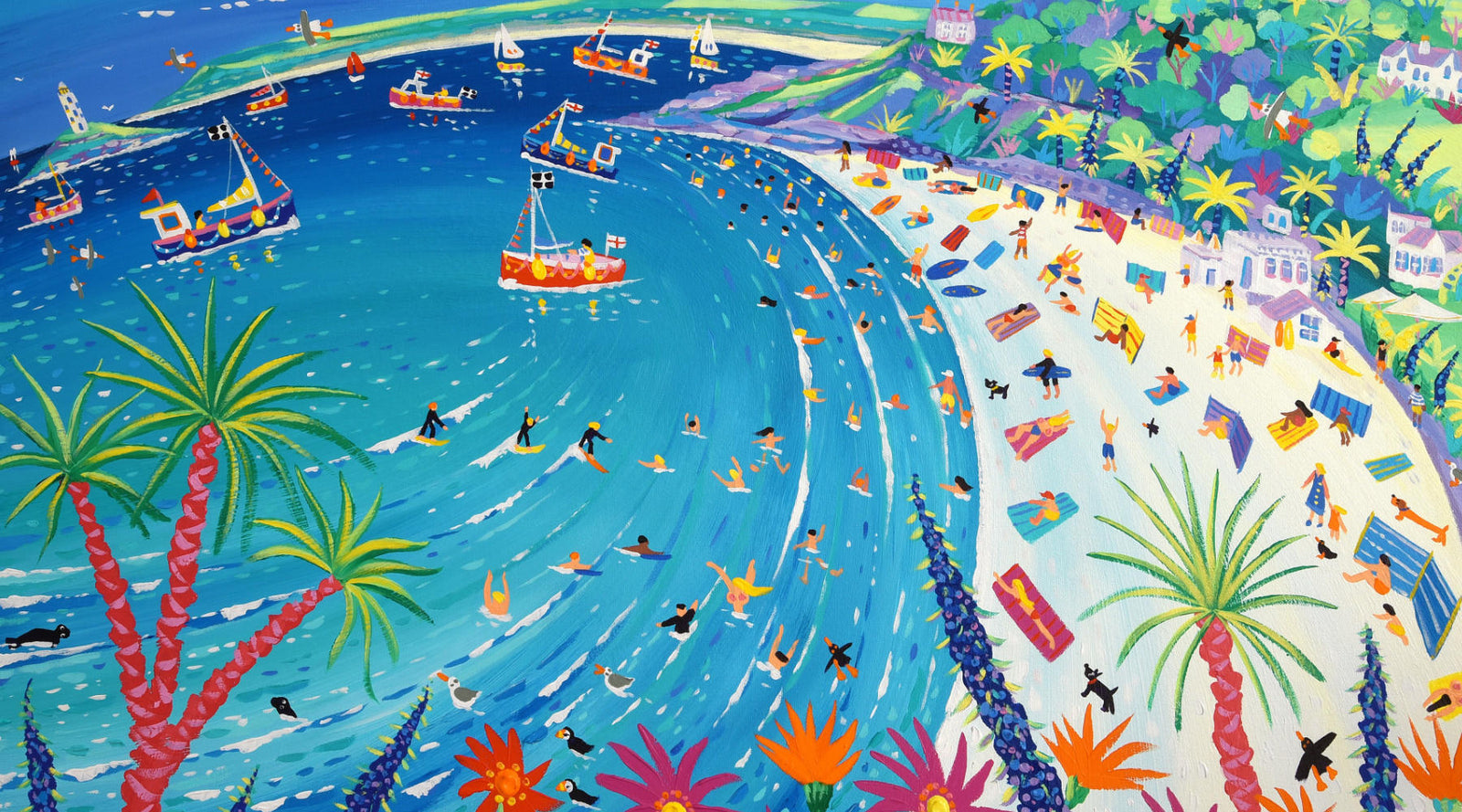
Seascape oil paintings have long captivated artists and audiences alike, with their evocative depictions of the sea’s ever-changing moods. Among the artists renowned for their seascapes is George Frederick Watts, a British painter whose work goes beyond the surface of the waves, exploring themes of nature, human emotion, and the sublime. In this article, we will take a closer look at the significance of seascape oil painting by Watts, exploring his unique style, the techniques he used, and how his seascapes resonate with viewers even today.
The Legacy of George Frederick Watts
George Frederick Watts (1817–1904) was an influential British artist known for his allegorical paintings, portraits, and symbolist works. While he is perhaps best recognized for his thought-provoking, often mystical themes, Watts also created impressive seascapes that demonstrate his profound appreciation for nature. Watts’ interest in the sea went beyond mere representation; he approached the ocean as a powerful force, a subject capable of conveying deep spiritual and philosophical meanings.
Watts’ seascapes are distinct from the popular seascape paintings of his time, which often emphasized realism. Instead, he captured emotional intensity and mood, making his seascapes feel almost dreamlike and surreal. Through his unique approach, Watts sought to express the vastness and mystery of the sea, positioning it as a mirror for human experiences, such as peace, turmoil, hope, and introspection.
Style and Technique in Watts’ Seascape Oil Paintings
Watts’ approach to seascape painting is characterized by an ethereal quality, achieved through soft brushstrokes, rich color palettes, and a focus on light and shadow. His works often depict expansive skies, where clouds are bathed in warm or cool tones that shift with the time of day and the imagined weather conditions. This interplay of light and color is essential to the mood in Watts’ seascapes, as he uses these elements to evoke emotions rather than aiming for strict realism.
Watts’ color palette for his seascapes typically includes muted earth tones, deep blues, and subtle greens that evoke the natural color of the sea and sky. However, he also incorporated unexpected colors, such as pinks, purples, and oranges, to represent the shifting light during sunrise or sunset. This use of color, combined with his technique of layering oil paints, creates a dynamic sense of movement and depth that mirrors the sea’s constant ebb and flow.
One of the most defining aspects of Watts’ seascapes is his use of texture. By varying the thickness of his paint application, he could portray the frothy texture of waves, the calm stillness of a sea at dawn, or the churning intensity of stormy waters. He often applied oil paint in thick, sweeping strokes that give his works a tactile quality, encouraging viewers to not only see but almost feel the scene before them.
Themes in Watts’ Seascapes: Nature as a Reflection of Humanity
While Watts’ seascapes are visually arresting, they also carry deeper, allegorical meanings. Unlike traditional seascapes that merely document the beauty of nature, Watts’ seascapes delve into philosophical territory, using nature as a metaphor for human emotions and experiences. The ocean, in Watts’ view, represents a vast, untamed force that, like human life, is at times serene and at other times tumultuous.
In some of his seascapes, the calm sea and gentle horizon lines evoke a sense of peace and introspection, drawing parallels to moments of inner stillness and clarity. Conversely, his stormy seascapes, where dark clouds loom and waves crash violently, reflect periods of struggle and turmoil. In these works, the ocean becomes a powerful metaphor for the darker aspects of the human psyche, symbolizing emotions like fear, anger, and despair.
Through these emotional contrasts, Watts captures the duality of the sea—and by extension, life itself—as a place of both beauty and danger, calm and chaos. By approaching the sea as a symbolic entity, Watts elevates his seascapes from simple landscape paintings to profound meditations on the human condition.
The Influence of the Symbolist Movement on Watts’ Seascapes
Watts was associated with the Symbolist movement, which emerged in the late 19th century and emphasized the use of symbols to express emotions, ideas, and spirituality. This influence is evident in his seascapes, which often contain abstract and mystical elements. Rather than focusing on the accurate depiction of physical details, Watts embraced ambiguity, inviting viewers to interpret the scenes based on their own emotions and experiences.
This symbolic approach is particularly effective in Watts’ seascapes, as the vastness of the ocean lends itself to abstract interpretation. By forgoing literal representations, Watts encourages viewers to connect with the emotions conveyed in his paintings. The sea becomes a blank canvas upon which viewers can project their own feelings, making each painting a deeply personal experience.
Why Watts’ Seascapes Remain Resonant Today
Over a century after his death, George Frederick Watts’ seascape oil paintings continue to captivate audiences with their emotional depth and atmospheric beauty. In a world where rapid change and digital media often dominate our lives, Watts’ paintings offer a sense of timelessness and a reminder of the natural world’s majesty. His seascapes invite viewers to pause, reflect, and connect with the broader themes of existence.
Watts’ works are not only admired by art connoisseurs but also appreciated by anyone who has ever felt a connection to the ocean. His seascapes resonate with viewers of all backgrounds, as they touch on universal emotions that are part of the human experience. The enduring popularity of Watts’ seascapes underscores his success in creating works that transcend cultural and temporal boundaries, speaking to the core of what it means to be human.
Watts’ Legacy and Contribution to Seascape Art
George Frederick Watts’ approach to seascape oil painting has had a lasting impact on the genre. By infusing his works with emotional and philosophical depth, he expanded the potential of landscape painting, inspiring future generations of artists to see seascapes as more than mere depictions of nature. His influence can be seen in the works of later painters who explore similar themes, as well as in the continued appreciation for symbolic art that invites personal interpretation.
While Watts’ seascapes were relatively unconventional in his time, today they are celebrated as visionary works that bridge the gap between nature and the human spirit. His contribution to art extends beyond his technical skill and choice of subject matter; he offered a new way of seeing the world, one that recognizes the emotional power of nature.
Conclusion
The seascape oil paintings by Watts are masterpieces that capture the essence of the ocean in all its beauty and complexity. Through his unique style, symbolic approach, and masterful technique, Watts created works that resonate deeply with viewers, encouraging them to find their own meaning in the waves, the sky, and the horizon. His legacy lives on in the timeless appeal of his seascapes, which continue to inspire and move audiences, serving as reminders of the ocean’s dual nature as both a source of peace and a mirror of the human soul.





